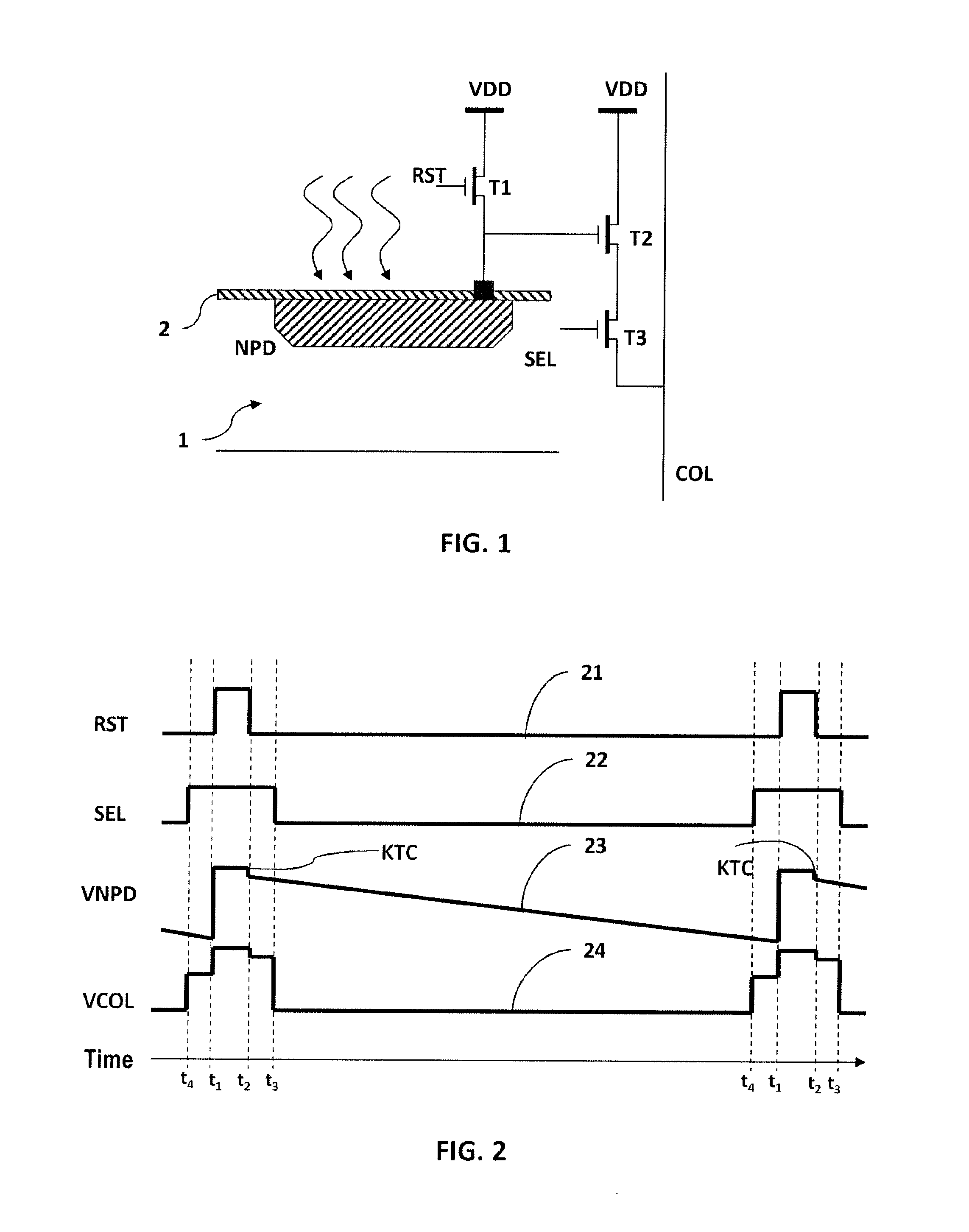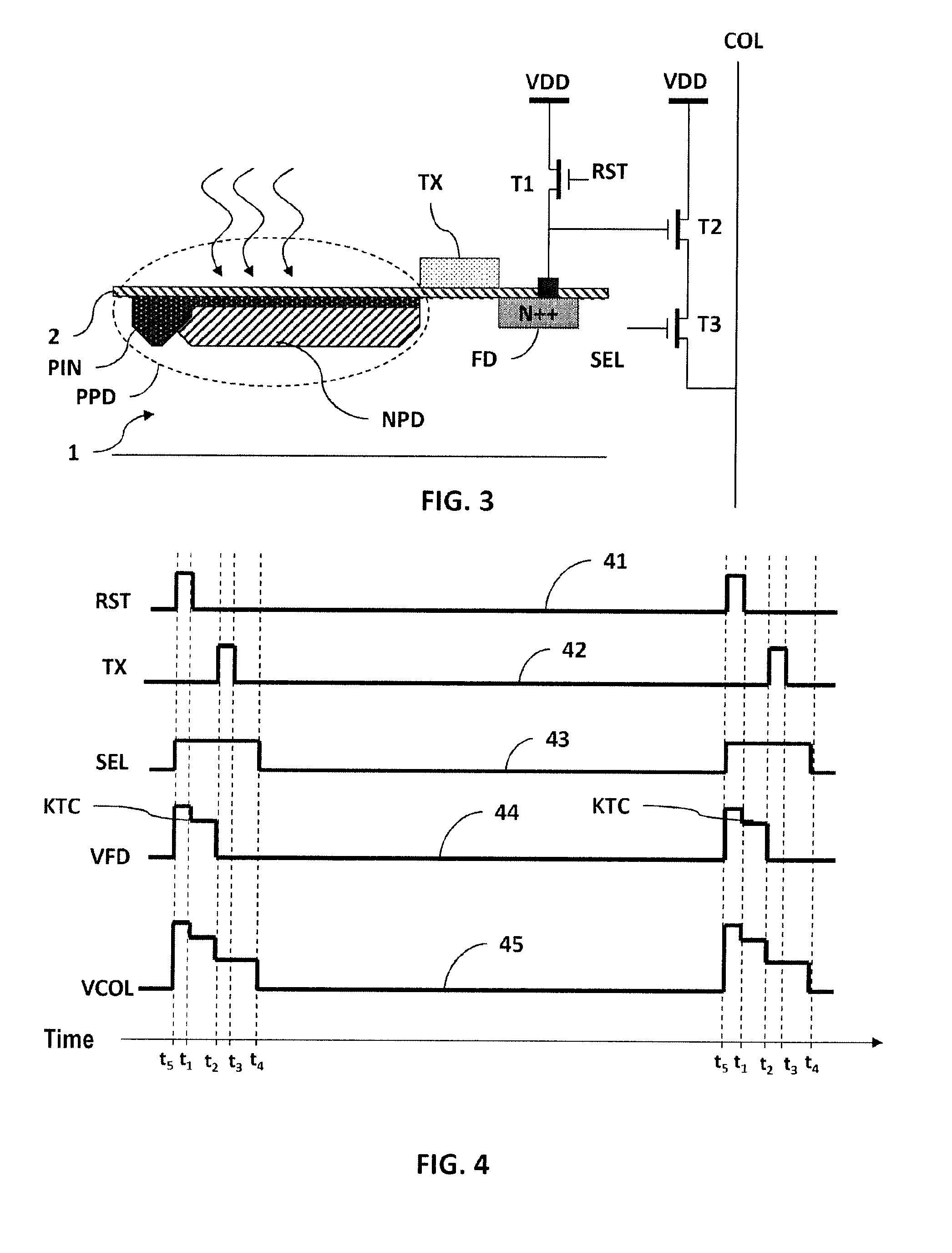Active pixel structure with improved charge transfer
a charge transfer and active pixel technology, applied in the field of cmos integration technology, can solve the problems of inability to compensate, and low switching noise ktc, and achieve the effect of reducing the noise of readout, pixel afterglow, and low charge-voltage conversion factor
- Summary
- Abstract
- Description
- Claims
- Application Information
AI Technical Summary
Benefits of technology
Problems solved by technology
Method used
Image
Examples
first embodiment
[0097]With reference to FIG. 8, an active pixel structure comprises a P-type semiconductor substrate 1 in which at least one photoelectric conversion zone NPD is defined by N-type doping to accumulate an amount of charge during exposure to light. A shallow, heavily P-doped surface zone PIN forms a co-called “pinning” layer for ground pinning of the surface potential of the photoelectric conversion zone NPD.
[0098]A floating diffusion node FD defined by N-doping in the substrate 1 is arranged at a distance away from the photoelectric conversion zone NPD. The N-doping of the floating diffusion node FD is generally heavier than the N-doping of the photoelectric conversion zone NPD.
[0099]Very often the floating diffusion node FD can be merged with the source of the reset transistor T1.
[0100]An isolating layer 2 of silicon dioxide is arranged on the surface of the substrate 1 and in particular insulates the gate of the transfer transistor TX from the substrate 1.
[0101]The structure furth...
second embodiment
[0152]With this second embodiment it is possible to place the main forming of the photodiode PPD before the fabrication steps of the CMOS transistors, and thereby achieve considerable relaxation of heat budget constraints between the needs of the photodiode and those of the CMOS transistors.
[0153]FIGS. 15a and 15b illustrate examples of a pixel structure according to the second embodiment.
[0154]As in the first embodiment, the active pixel structure of CMOS type comprises:[0155]a P-type semiconductor substrate;[0156]at least one photoelectric conversion zone NPD defined by N-doping in the substrate, accumulating an amount of charge during exposure to light and comprising a P-doped surface zone PIN;[0157]at least one floating diffusion node FD defined by N-doping in the substrate;[0158]at least one readout circuit to read a variation in voltage on the floating diffusion node FD induced by the transferred charges;[0159]at least one transfer transistor TX of MOS type, the gate of said t...
PUM
 Login to View More
Login to View More Abstract
Description
Claims
Application Information
 Login to View More
Login to View More - R&D
- Intellectual Property
- Life Sciences
- Materials
- Tech Scout
- Unparalleled Data Quality
- Higher Quality Content
- 60% Fewer Hallucinations
Browse by: Latest US Patents, China's latest patents, Technical Efficacy Thesaurus, Application Domain, Technology Topic, Popular Technical Reports.
© 2025 PatSnap. All rights reserved.Legal|Privacy policy|Modern Slavery Act Transparency Statement|Sitemap|About US| Contact US: help@patsnap.com



